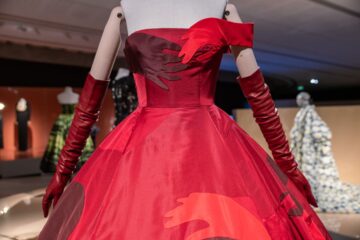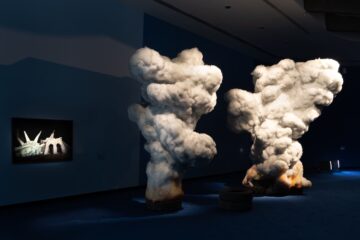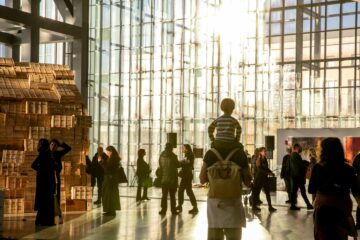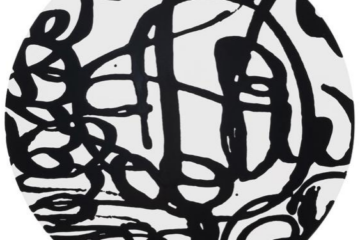GILBERTO ZORIO – TRATTI CON ARCO VOLTAICO – GALLERIA OREDARIA – ROME
GILBERTO ZORIO
TRATTI CON ARCO VOLTAICO
Opening, Wednesday 23 May 2012, 6 pm
Until 21 September 2012
OREDARIA ARTI CONTEMPORANEE / via Reggio Emilia, 22-24 / 00198 Roma
+ 39 06 97601689 / info@oredaria.it / www.oredaria.it
Monday- Friday 10 am-1 pm / 4 pm-7.30 pm
The OREDARIA gallery is pleased to present ‘Tratti con Arco Voltaico’ (Lines with Voltaic Arc), the third solo exhibition in its spaces by Gilberto Zorio, well known exponent of the ‘Arte Povera’ movement.
Following his exhibition in 2003 that inaugurated the gallery and presented a series of works spanning from the beginning of his career up to his most recent works, and the exhibition in 2007 in which the gallery’s spaces were modulated by the centrality of the ‘Torre Stella’ (Star Tower), Zorio returns to Rome with an exhibition which brings together two disciplines involving materials that are very distant from one another: ‘drawing’, creating images using lines on paper or parchment, and ‘sculpture’, employing the force of the electrical spark and the technology of the voltaic arc.
The drawings, the lines, touch upon and sometimes slip into the sculptures.
The exhibition is inspired by an artwork created ‘long ago’ in 1968 and shown for the first time in ‘69 at the Sonnabend gallery in Paris.
This long voyage has led to the works exhibited today.
Darkness is often an important component of the artist’s work. Many of his works ‘use’ a sudden lack of light to invert their image and bring out details that cannot normally be seen. This exhibition displays the artist’s continuing commitment to “revealing that which is not expected, transforming it into a real image, solid and yet impalpable, which seeks the gaze of those that wish to see it… and hear it.”
(Gilberto Zorio)
Gilberto Zorio was born in 1944 in Andorno Micca, Biella (Italy)
He lives and works in Turin.
A member of the movement formed in Italy in the mid 1960’s known as “Arte Povera”, Gilberto Zorio focuses on metamorphoses and alchemies, exploring natural phenomena in his work, such as evaporation or oxidisation and their effect on materials. The idea of energy has always been a constant running through his oeuvre, favouring an art that reveals itself in the making. His interest in electricity led him to incorporate lamps, incandescence and phosphorescence into his works, while in others he uses stars and javelins, archetypal forms that also evoke energy. His sculpture favours the use of fragile materials from which emerge gigantic steely stars or Pyrex alembics containing liquid solutions balanced on thin steel javelins. Suspending these elements in intentionally precarious installations, the artist deals with the tensions and transience of the mental physical-chemical world. Since 1967, in addition to his exhibitions in private galleries, he has had numerous one-man-shows in public and private spaces such as the Kunstmuseum in Lucerne (‘76), the Stedelijk Museum in Amsterdam (‘79), the Ravenna Pinacoteca (‘82), the Venice Biennale (‘78, ‘80, ‘86, ‘95 and ‘97), the Kunstverein in Stuttgart (‘85), the Centre d’Art Contemporain in Geneva and the Centre Georges Pompidou in Paris (‘86), the Tel Aviv Museum and the Stedelijk Van Abbemuseum in Eindhoven (‘87), the Philadelphia Tyler School of Art (‘88), the Museu Serralves in Oporto (’90), the IVAM in Valencia (‘91), the Centro per l’Arte Contemporanea Pecci in Prato (‘92), Documenta in Kassel (’72 and ‘92), the Galleria civica d’Arte Contemporanea in Trento (‘96), the Dia Center for the Arts in New York (2001), Le Creux de l’Enfer Centre d’Art Contemporain in Thiers and the Institut Mathildenhöhe in Darmstadt (2005), the Milton Keynes Gallery in Milton Keynes (2008), the MAMbo in Bologna (2009), the CGAC in Santiago de Compostela (2010), the MACRO in Roma (2010). The MAXXI in Rome (Via Guido Reni 4/A), houses a piece by Zorio named ‘Canoa Roma’ (Rome Canoe), especially designed for the museum and jutting out from the large window on the top floor. The piece visually involves the square outside and creates a luminous and resonant relationship suspended between darkness and light.
His artworks are present in several public collections including:
The Museum of Contemporary Art (Tokyo)
Castello di Rivoli e Galleria d’Arte Moderna (Turin)
Galleria Nazionale d’Arte Moderna (Rome)
Museu Serralves (Oporto)
Musée d’Art et d’Industrie (Saint-Etienne)
Stedelijk Museum (Amsterdam)
Stedelijk Van Abbemuseum (Eindhoven)
Centre Georges Pompidou (Paris)
Museum of Modern Art (New York)
Kröller-Müller Museum (Otterlo)
S.M.A.K. (Ghent)
F.r.a.c. Champagne-Ardenne (Rheims)
F.r.a.c. Nord-Pas (Calais)
Guggenheim Museum (New York and Venice)
Civiche Raccolte d’Arte (Milan)
MAMbo, Museo d’Arte Moderna (Bologna)
Centro per l’Arte Contemporanea Pecci (Prato)
Musée d’Art et d’Histoire (Geneva)
Musèe d’Art Moderne et d’Art Contemporain (Nice)
Tate Modern (London)
Toyota Municipal Museum of Art (Toyota)
Kunstmuseum (Lucerne)
IVAM (Valencia)
Kunstmuseum, (Winterthur)
MART (Rovereto)
.-.-.
GILBERTO ZORIO
TRATTI CON ARCO VOLTAICO
Inaugurazione, mercoledì 23 maggio 2012, ore 18.00
Fino al 21 settembre 2012
La galleria OREDARIA è lieta di presentare “Tratti con Arco Voltaico” la terza personale nei suoi spazi di Gilberto Zorio, noto esponente dell’Arte Povera.
Dopo la mostra del 2003 che inaugurò la galleria e che presentò un ciclo di lavori dagli esordi a quelli più recenti e l’esposizione del 2007 dove gli spazi erano modulati dalla centralità della “Torre Stella”, Zorio ritorna a Roma con una mostra in cui coesisteranno due discipline fatte di materiali molto lontani tra di loro. Il “disegno”, con l’immaginazione del tratto su carta o su pergamena, e la “scultura”, con la forza della scarica elettrica e la tecnologia dell’arco voltaico.
I disegni, i tratti, confinano e s’insinuano, a volte, nella scultura.
La mostra prende spunto da un lavoro che viene da “lontano” realizzato nel 1968, opera esposta per la prima volta nel ‘69 presso la galleria Sonnabend di Parigi.
Il lungo viaggio è giunto alle opere di oggi.
Il buio è spesso per l’artista una componente importante dell’opera. Molti lavori, infatti, “approfittano” dell’improvvisa mancanza di luce per ribaltare la loro immagine e far emergere particolari abitualmente non visibili.
La mostra manifesta il continuo impegno dell’artista nel “rivelare ciò che non si suppone, trasformandolo in un’immagine reale, concreta ma anche impalpabile, che cerca lo sguardo di chi vuol vedere…e anche ascoltare.”
(Gilberto Zorio)
Gilberto Zorio è nato nel 1944 ad Andorno Micca, Biella.
Vive e lavora a Torino.
Dal ‘67 ad oggi oltre alle mostre in gallerie private ha esposto in numerose personali allestite presso spazi espositivi pubblici come il Kunstmuseum di Lucerna (‘76), lo Stedelijk Museum di Amsterdam (‘79), la Pinacoteca di Ravenna (’82), la Biennale di Venezia (‘78, ‘80, ‘86, ‘95, ‘97), il Kunstverein di Stoccarda (‘85), il Centre d’Art Contemporain di Ginevra e il Centre Georges Pompidou di Parigi (‘86), il Tel Aviv Museum e lo Stedelijk Van Abbemuseum di Eindhoven (‘87), la Philadelphia Tyler School of Art (‘88), Museu Serralves di Oporto (‘90), l’Istituto Valenciano de Arte Moderna di Valencia (‘91), il Centro per l’Arte Contemporanea Pecci di Prato, Documenta di Kassel e il Musèe d’Art Moderne et d’Art Contemporain di Nizza (‘92), la Galleria Civica d’Arte Contemporanea di Trento (’96), il Dia Center for the Arts di New York (2001), Le Creux de l’Enfer Centre d’Art Contemporain in Thiers e l’Institut Mathildenhöhe di Darmstadt (2005), la Milton Keynes Gallery, di Milton Keynes (2008), il MAMbo di Bologna (2009) e il CGAC di Santiago de Compostela (2010), il MACRO di Roma (2010). Al MAXXI di Roma, in Via Guido Reni 4/A, è esposta l’opera di Zorio “Canoa Roma” progettata per il museo e aggettante a partire dalla grande vetrata del piano superiore. L’opera coinvolge visivamente la piazza esterna e stabilisce una relazione luminosa e sonora, sospesa fra il buio e la luce.







No Comment